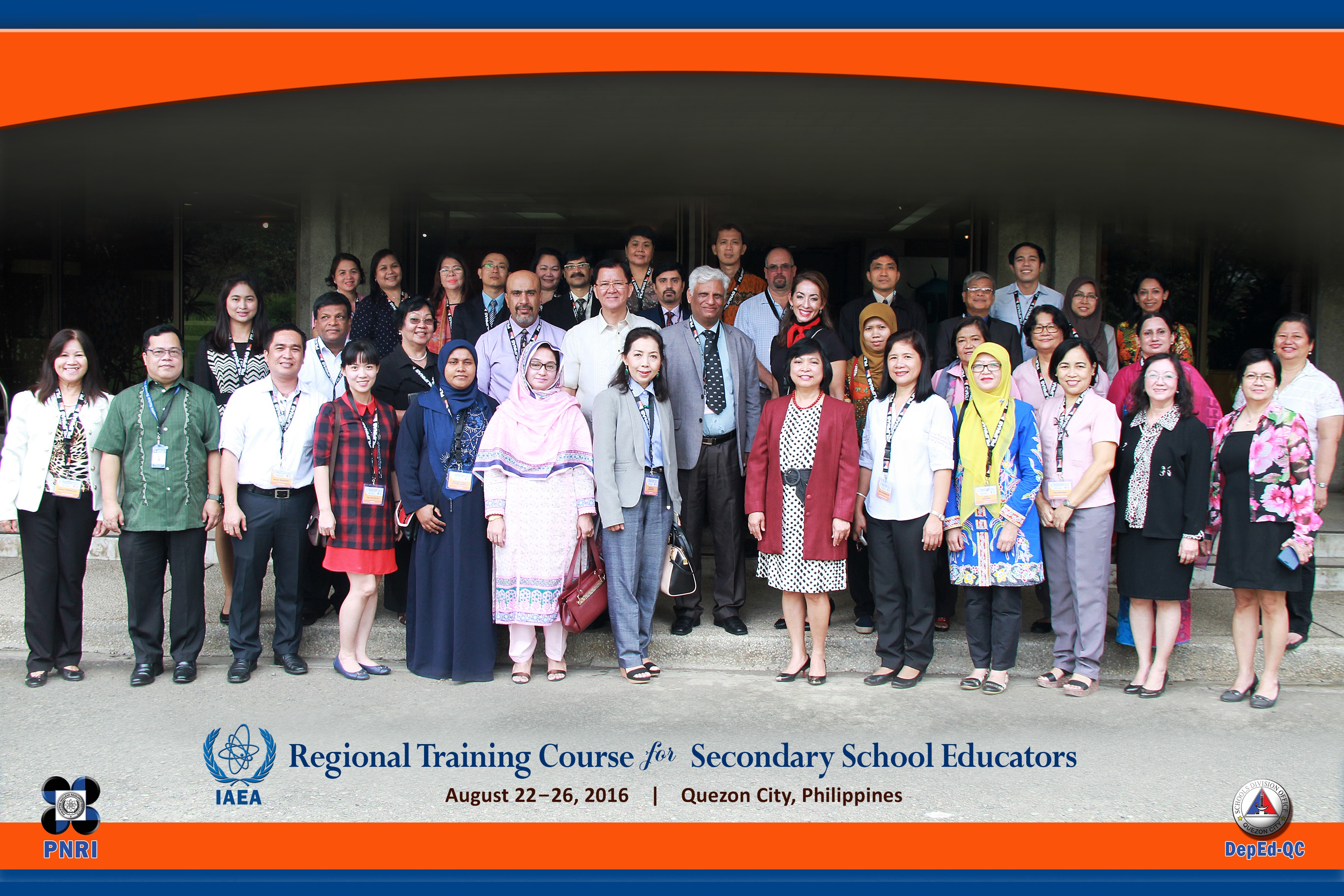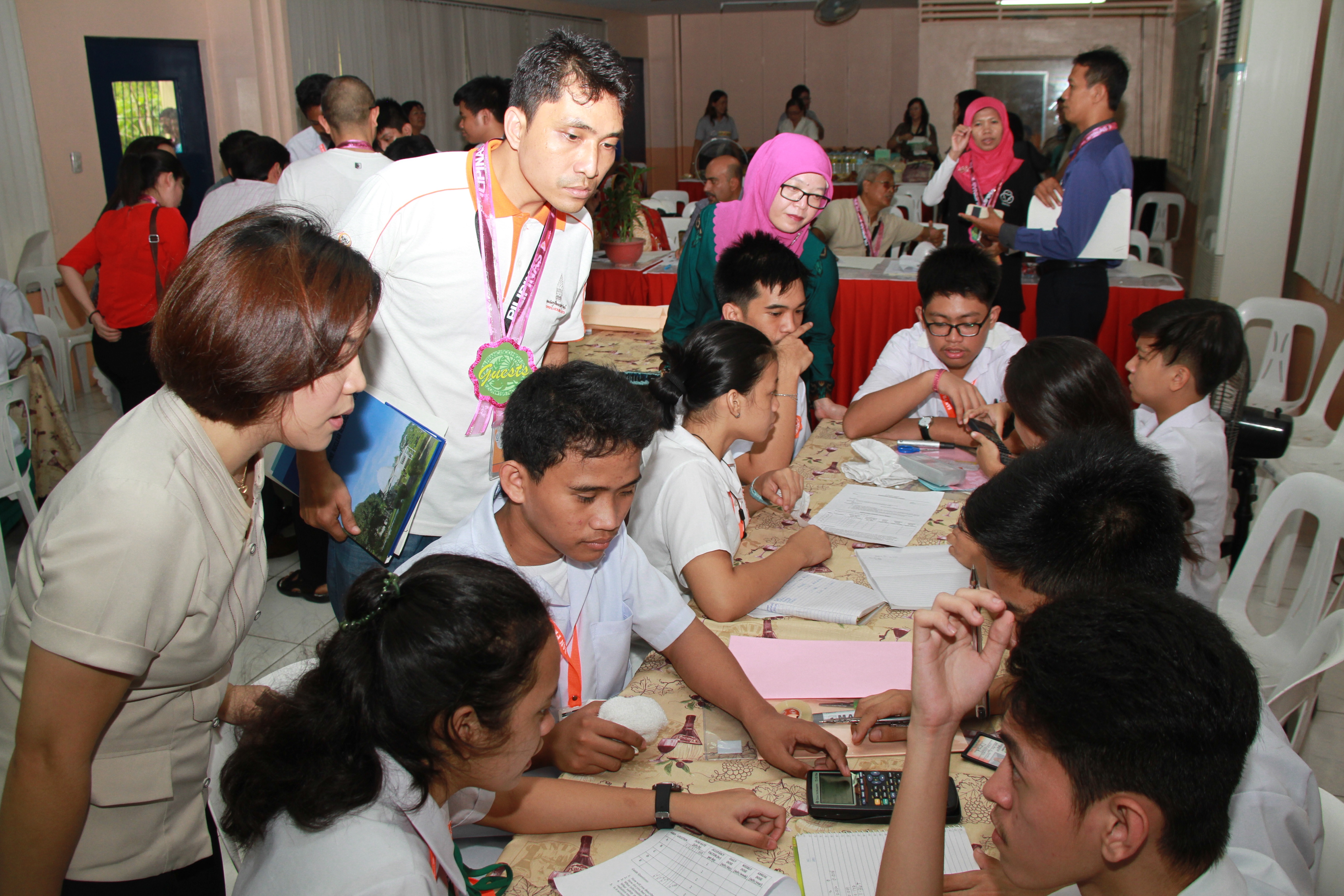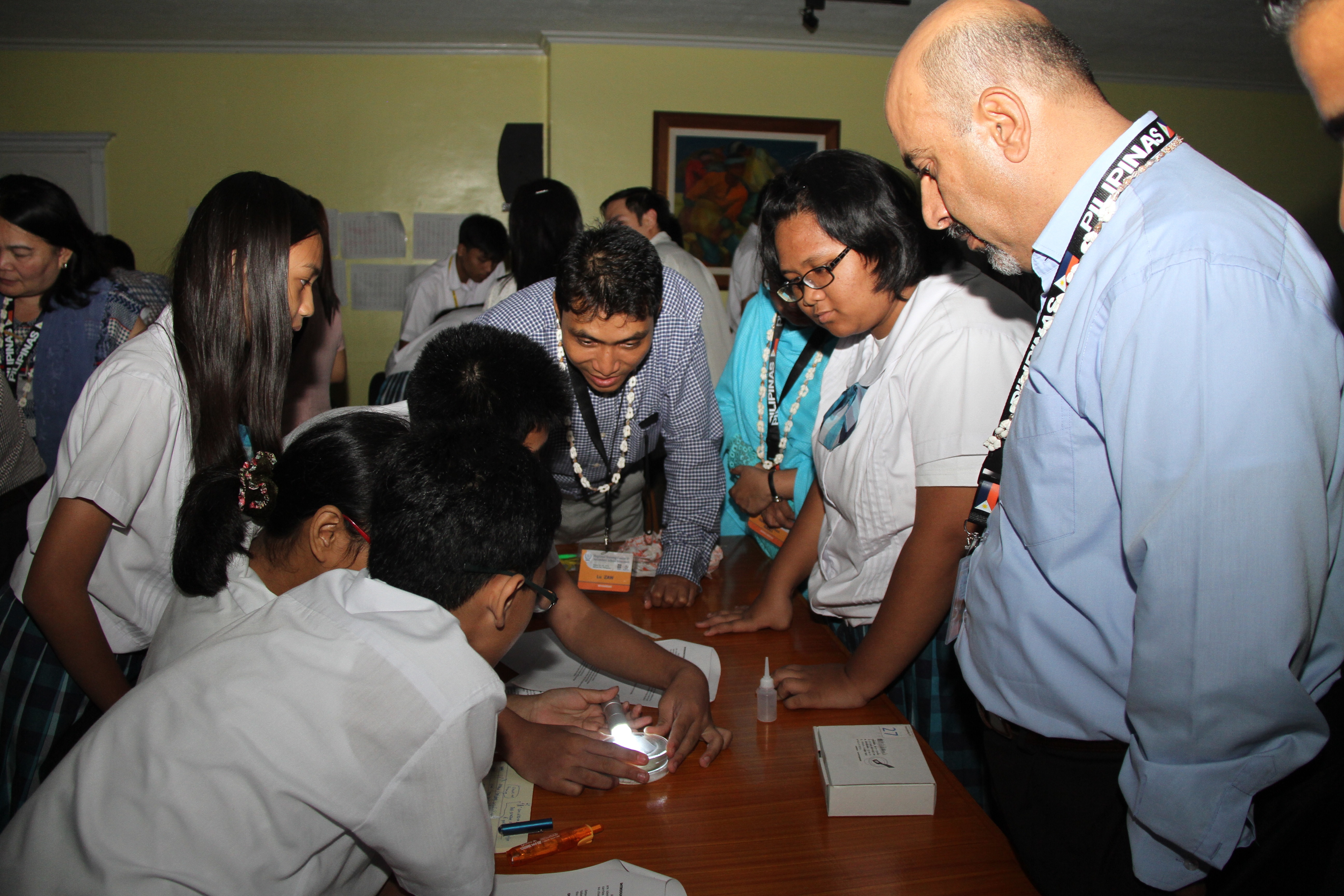
IAEA Technical Officer Dr. Sunil Sabharwal (2nd row, 6th from left), Dr. Valerie Segovia of the Nuclear Power Institute, Texas A&M University, USA (2nd row, 6th from right), Mr. Eko Supardyono from Indonesia (4th row, 3rd from left) DepEd-NCR Regional Director Dr. Ponciano Menguito (2nd row, 5th from left), DepEd-QC Science Education Supervisor Dr. Maria Violeta Tupas (2nd row, 3rd from left) and PNRI Officer-in-Charge, Office of the Deputy Director Dr. Soledad Castañeda (2nd row, 5th from left) with the participants and facilitators of the IAEA Regional Training Course for Secondary School Educators


The participant teachers observe the class demonstration and radiation detection experiments by teachers and students from San Francisco High School (left) and Quezon City Science High School (right)
Philippines Hosts Asian Educators to Bring Nuclear S&T to Secondary Schools
Teachers and educators throughout the Asia-Pacific region met in the Philippines as part of the international effort to bring nuclear science to classrooms as it hosts the Regional Training Course for Secondary School Educators from August 22-26, 2016.
The course was organized by the International Atomic Energy Agency (IAEA) in cooperation with the Department of Science and Technology – Philippine Nuclear Research Institute (DOST-PNRI) and the Department of Education Division of City Schools – Quezon City (DepEd – QC).
The training course supportedthe secondary school science educators in Member States in developing their competency in delivering nuclear science and technology topics as effective and engaging teaching learning processes. The week-long event also fostered a healthy discussion on the experiences and strategies of various countries in the Asia-Pacific region in integrating nuclear S&T in their curriculum to meet their national perspectives.
Among the participants were government officials and science educators from Bangladesh, Jordan, Pakistan, Philippines, Israel, Thailand, Vietnam, Myanmar, Sri Lanka, Malaysia and Indonesia, who trained on new approaches that will make teaching complex concepts such as nuclear energy and radiation more enjoyable and understandable. Ms. Rhodora Leonin of the PNRI Nuclear Information and Documentation Section is the Course Director.
Lecturers from the IAEA shared their expertise in teaching as well as promoting nuclear S&T to the younger generation. Several teachers from two pilot schools in Quezon City – San Francisco High School and Quezon City Science High School – also performed classroom demonstrations during the training course.
These teachers were previously trained in conducting lectures and radiation-related activities like the cloud chamber experiment, which allows students to “see” radiation through the trails left by emitted particles, and using the Hakaru-kun radiation detector in the environment, courtesy of the IAEA and the University of Tokyo.
Not to be outdone, the high school students from both pilot schools showcased their creative talents combined with what they have learned from the previous seminars to promote nuclear S&T applications.
In 2015, the Philippines served as one of the pilot countries for the project along with Malaysia, Indonesia and the United Arab Emirates. It aims to reach out and develop the interests of young students in the field of science and technology, with an emphasis on the peaceful and beneficial uses of nuclear and radiation applications.
The project also aims to encourage students to eventually take up science-related courses in college as well as their professional careers, which will augment the manpower and technological development of the IAEA Member States in the region.
“Students cannot go into these fields unless they know they exist,” said IAEA Technical Officer Dr. Sunil Sabharwal in an interview with the IAEA.
“We are afraid of things we don’t understand. Science, technology and maths are not subject areas students usually feel close to. We need teachers who can show them that these aren’t difficult, but actually interesting.”












































